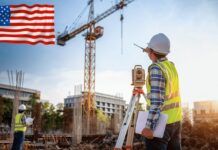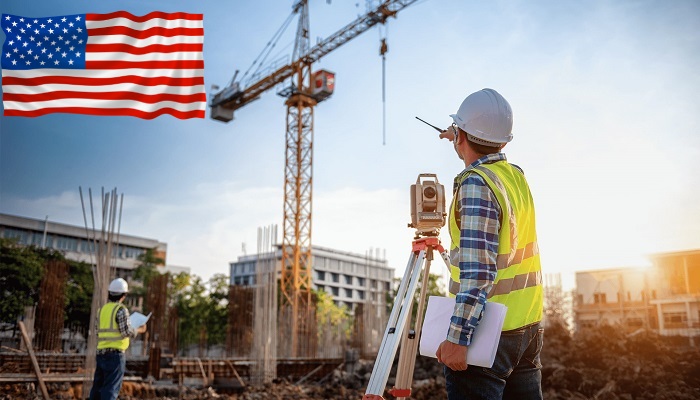The US contractors happen to be staying busy due to infrastructure work since federal money goes on to roll out. But worker shortages as well as high levels of inflation continue to strain the sector. Besides, the spending on transit as well as fossil fuel projects went on to slump in the past year.
It is well to be noted that, as per the U.S. Census Bureau, the overall construction spending managed to go up 14% from December 2022 to December 2023 in a non-inflation-adjusted dollar scenario, with non-residential spending rising 20%, pushed because of manufacturing work and also due to infrastructure segments such as roads and waste.
Zachary Fritz, the economist from the Associated Builders and Contractors, says that it does not seem like anyone is actually going ahead and struggling when it comes to activity and that their expectation is that they will most likely keep seeing the infrastructure spending dollars hitting the ground, and thereby witnessing the growth of these projects.
Besides the federal funding, infrastructure projects have gone on to get benefited from a total strong economy, remarked the chief economist of Associated General Contractors of America, Ken Simonson. Federal pandemic relief, in addition to healthy local government budgets, has gone on to push the work forward.
Although the money did not happen to be earmarked, especially for the construction, it did help the governments to have balanced-budget needs so as to avoid cutbacks, Simonson added.
Notably, the respondents to the AGC’s 2024 Construction Hiring and Business Outlook forecasted that the infrastructure project opportunities are most likely to surge in 2024, with 32% anticipating the value of projects in water as well as sewer to be much higher, 30% when it comes to transportation as well as bridges or highways, 29% within the federal projects, and also 25% across the power sector.
It is worth noting that, as most infrastructure work grew in 2023, spending on oil as well as gas, and also transit projects went on to fall year over year. Those sectors went ahead and faced some very unique challenges.
Senior vice president and chief economist at the American Road and Transportation Builders Association, Alison Black, said that the fact is that the fossil fuel projects have, in a way growingly struggled to get financing as banks go on to decrease their footprint in the industry. As for transit, COVID-19 decreased the ridership as well as revenues, and the subway, along with the light rail construction, has seen a bit of a lag due to this. Still, there is more work now taking place on station terminals as well as on Amtrak Class 1 railroads.
Infrastructure headwinds
69% of the respondents anticipate increasing their headcount as well as hiring in the next 12 months, according to the AGC’s 2024 Outlook, although 55% go on to believe it is going to be very hard to hire. Simonson added that the contractors are still struggling in order to staff their jobs, which happens to be impacting the work.
He further says that the labor costs are for sure rising, and projects may as well take longer if one happens to have just 40 electricians and require a minimum of 100. There are a certain projects that have been put on hold, are even scaled-back, or are taking much longer than it was anticipated due to the shortage of crucial labor.
Projects happened to be also affected due to the shortages in materials, specifically switchgear transformers as well as other electrical equipment, said Simonson. And although the inflation is not as bad as it happened to be a few years ago, the fact is that it has not disappeared, remarks Black.
There are some material prices that have moderated, but there still happens to be an upward pressure on certain different kinds of commodities, and the point is that they are not completely out of the woods as yet, Black adds.
Regulatory as well as the judicial review processes also happen to be adding barriers to federal funds being released when it comes to work, Simonson said. For instance, Build America, Buy America regulations go on to need certain materials which require to be domestically produced pertaining to federal projects, and the contractors say that getting a waiver is indeed taking a lot longer now.
According to Simonson, it has bumped up to a higher level than when the point that one went to the Federal Highway State Office and remarked that here is the evidence which it is the only one that’s available.
More progress is ahead for some sectors
It is well to be noted that Fritz has gone on to recently see an increase in activity when it comes to water, sewage, as well as waste disposal-related projects, and he hopes that the public power projects are most likely to start this year.
Apparently, the power projects, in particular, happen to take the longest to plan, and are expected to be delayed, he adds.
Although the transit agencies go on to grapple with the pandemic-related impacts, the president of the American Society of Civil Engineers, Marsia Geldert-Murphey, says that such projects happen to be a key part when it comes to growing emphasis as far as the resilience as well as sustainability within the infrastructure is concerned.
She further adds that passenger rail as well as light rail happen to be something that has traditionally not witnessed a significant funding, and hence they happen to be seeing those projects move forward.
Apparently, Geldert-Murphey happens to be also witnessing an increased activity when it comes to ports as well as inland waterways and even bridge projects, with $40 billion coming from the IIJA earmarked for this specific work. The fact is that now those dollars happen to be translating to shovels in the ground, for sure.
She further says that they are looking out for some prominent projects, such as the Brent Spence Bridge between Ohio and Kentucky, as well as the Hudson River Tunnel in New York, receive funding to start.




































